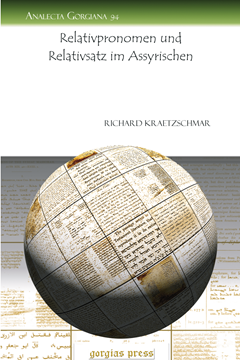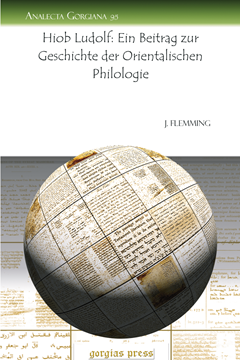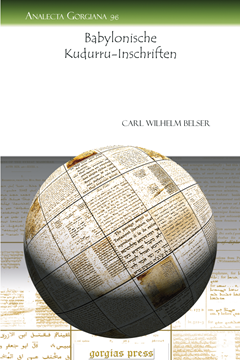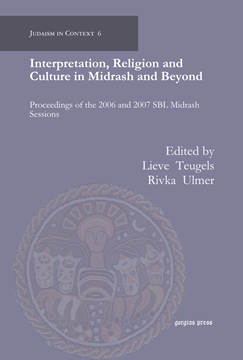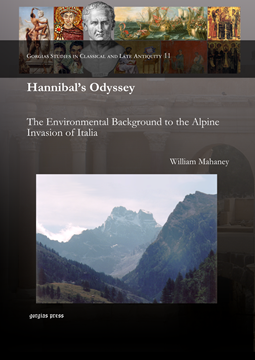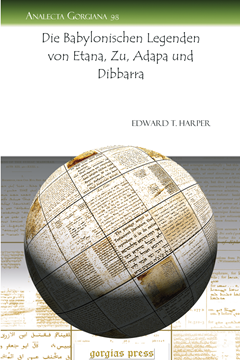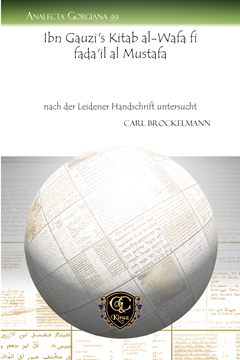Mémoire sur la Conquête de la Syrie
Series: Analecta Gorgiana 91
ISBN: 978-1-60724-010-5
Taken from the collection of studies published under the collective title Mémoires de l'histoire et de Ia geographie orientales, Mémoire sur la Conquête de la Syrie stands as a monument to the insight of M. J. de Goeje on the Arabic conquest of Syria. This brief account of an important phase of Syria’s history will be sure to please those interested in the general history of the Middle East as well as scholars studying the rise of Islam.
$73.00 (USD) $43.80 (USD)
Zur Erklärung der Babylonisch-Assyrischen Brieflitteratur
Series: Analecta Gorgiana 92
ISBN: 978-1-60724-011-2
In this formative study of the Babylonian and Assyrian letters, originally published over three articles in Beiträge zur Assyriologie, Delitzsch presents in transliteration and translation, 40 Akkadian letters, along with critical notes and remarks. These letters are addressed to the Queen-Mother and to the King and generally date from the Neo-Assyrian and Neo-Babylonian periods and contexts. An example of early analysis of the still-young discipline of Assyriology, this study provides insights into the dynamics of royal life in the late Mesopotamian empires.
$59.00 (USD) $35.40 (USD)
Relativpronomen und Relativsatz im Assyrischen
Series: Analecta Gorgiana 94
ISBN: 978-1-60724-013-6
In this study on relative pronouns and relative sentences in Assyrian, Kraetzschmar begins with the origin and demonstrative use of relative pronouns, noting the primary position of ša as a genitive and a preposition. Kraetzschmar also addresses relative sentences without ša. He also addresses the conjunctive relative sentence in Akkadian, considering subjective, objective, and sentences with time and syllogistic elements. Although a technical study, this exploration into a key form of expression in the burgeoning era of Akkadian studies will still find a place in libraries of specialists in Mesopotamian languages.
$45.00 (USD) $27.00 (USD)
Ein Beitrag zur Geschichte der Orientalischen Philologie
By J. Flemming
Series: Analecta Gorgiana 95
ISBN: 978-1-60724-016-7
As a scholar of the languages of early Christianity, including Ethiopic and Syriac, Johannes Flemming felt a debt to the learned scholar of the seventeenth century, Job Leutholf (also Hiob Ludolf). Still cited as one of the essential pieces of Leutholf’s biography, this article is required reading for those interested in the life of this remarkable scholar. After sketching an outline of Leutholf’s life, Flemming then moves on to focus on his Ethiopic studies. Flemming concludes his articles with the correspondence between Leutholf and the abbot Gregorius who initially taught him the Ethiopic language.
$53.00 (USD) $31.80 (USD)
Babylonische Kudurru-Inschriften
Series: Analecta Gorgiana 96
ISBN: 978-1-60724-017-4
An early study of the Babylonian kudurru (boundary stone) inscriptions of what is now known as the Kassite Era, this booklet presents a self-contained exploration of two of the markers. Focusing on Kudurru Inscriptions III R. 43 and III R. 41, Belser gives transcriptions and translations of both texts. A detailed commentary follows the presentation of the actual texts, and this is accompanied by notes from the original drawings of the text. Carefully reproduced full text hand-drawn copies are also included.
$53.00 (USD) $31.80 (USD)
Interpretation, Religion and Culture in Midrash and Beyond
Proceedings of the 2006 and 2007 SBL Midrash Sessions
Edited by Lieve M. Teugels & Rivka Ulmer
Series: Judaism in Context 6
ISBN: 978-1-59333-619-6
The third issue of Proceedings of the Midrash session at the SBL Annual meeting published in this series. This volume contains papers on religion in midrash (2006) and modes of biblical interpretation in rabbinic, Syriac and Islamic traditions (2007).
$161.00 (USD) $96.60 (USD)
Hannibal's Odyssey
The Environmental Background to the Alpine Invasion of Italia
ISBN: 978-1-59333-951-7
Hannibal's invasion of Italia in 218 BC is depicted from the standpoint of environmental evidence elicited from ancient texts, and analyzed against present-day Earth Science databases. The conclusion is that the Punic Army followed the southern route over the Alps; a proposal first made by Sir Gavin de Beer in the 1960's.
$142.00 (USD) $85.20 (USD)
Die Babylonischen Legenden von Etana, Zu, Adapa und Dibbarra
Series: Analecta Gorgiana 98
ISBN: 978-1-60724-022-8
In this continuously cited article on the Babylonian legends of Etana, Zu, Adapa and the South Wind, and Dibbarra, Harper provides a substantial wealth of detail. Each of these myths is treated with an introduction, transliteration, and translation. Philological notes are given along with a summary of the contents. Comparison is also made with other ancient tales that bear resemblance to those contained in this volume. Further remarks by H. Zimmern on the Adapa legend are also included. This study is accompanied by hand-drawn copies of the cuneiform tablets and a photographic archive of the various fragments of the texts.
$51.00 (USD) $30.60 (USD)
Ibn Gauzi’s Kitab al-Wafa fi fada’il al Mustafa
nach der Leidener Handschrift untersucht
Series: Analecta Gorgiana 99
ISBN: 978-1-60724-023-5
This investigation of Abu-al-Faraj Ibn al-Jawzi’s al-Wafa bi Fada'il al-Mustafa, according to the Leiden manuscript by one of Germany’s foremost Semiticists, is essential reading for anyone interested in Arabic history and literature. Ibn al-Jawzi was a twelfth-century jurist and perhaps the most prolific writer in the history of Arabic literature. Al-Wafa bi Fada'il al-Mustafa (Detailed Accounts of the Chosen Prophet), is a large work on the biography of the prophet Muhammad. In this manuscript study, Brockelmann analyzes several aspects of this composition, including citations of this work by other notable Islamic writers.
$45.00 (USD) $27.00 (USD)
Der Untergang Nineveh’s und die Weissagungsschrift des Nahum von Elkosch
Series: Analecta Gorgiana 100
ISBN: 978-1-60724-024-2
An elaborate historical treatise on the fall of Nineveh and the writings of the prophet Nahum, this work is divided into three chapters. The first contains a translation of Nahum’s oracle against Nineveh with both historical and Assyriological commentaries. The second chapter is a history and description of the city of Nineveh from earliest times to its downfall. A brief but interesting discussion of the origin and development of the Medes as a people closes the second chapter. The final chapter is an archaeological and scientific military description of ancient Assyrian fortifications and a treatise on their use in the warfare of the period.
$56.00 (USD) $33.60 (USD)


